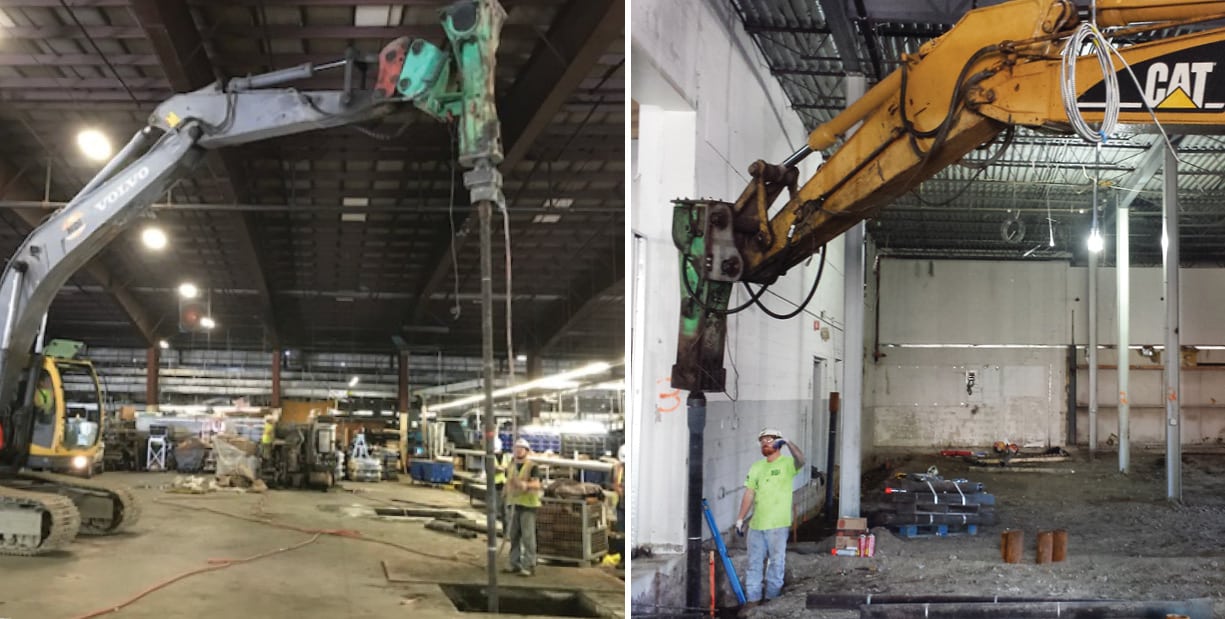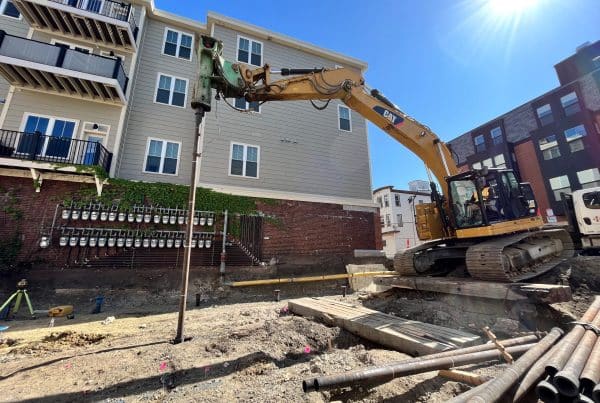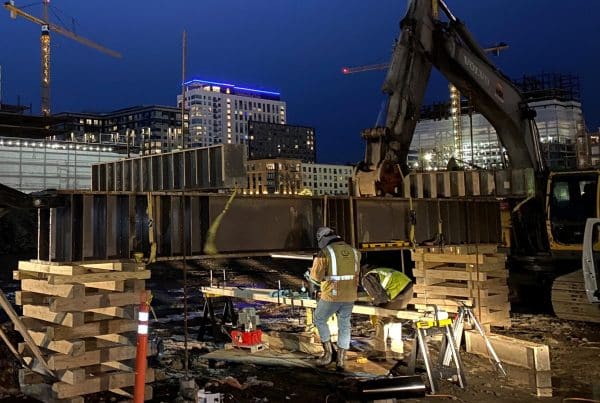Renovating or “Repositioning” tired existing buildings into vibrant, usable properties appears to be happening at light speed! These types of projects will continue to thrive as our world adapts to new ways of living and working. Some examples of repositioning may include converting offices buildings into laboratory space or expanding existing warehouses. So WHY are geotechnical design/build technologies sometimes necessary for these projects?
Repositioning an existing building sometimes requires vertical or lateral expansion, which can lead to some projects challenges, including:
- Support of new structural loads within the existing building footprint.
- Adding new foundations and basements adjacent to existing foundations.
Vertical building expansion can add new load (perhaps too much load!) to existing foundations. When an existing foundation is exposed to new load for which it was not designed, it could result in building settlement. Options to support new load are to either add new columns and foundations or underpin existing foundations. See Photo 1 above of a Ductile Iron Pile installation to support new columns and foundations within an existing warehouse. See Photo 2 below of a Helical Pile installation to underpin existing footings.
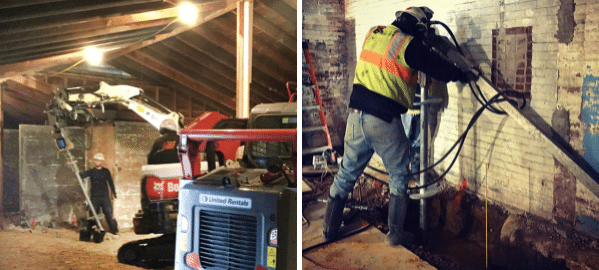
Photo 2: Helical Piles are installed inside of a building to underpin existing foundations.
Lateral building expansions clearly require new foundations. If new foundations are located in areas where unsuitable soils exist, Geopier® Ground Improvement technologies may be required to allow for conventional footing and slab-on-grade support. See Photo 3 below, which shows Geopier Rammed Aggregate Pier® (RAP) elements being installed to improve unsuitable foundation soils for a warehouse addition.
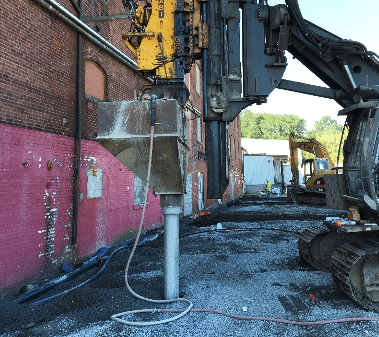
Photo 3: Geopier Rammed Aggregate Pier® (RAP) elements are installed to improve unsuitable foundation soils for a warehouse addition.
Lateral building expansion that includes a basement level may also create special geotechnical challenges, particularly if the new basement is located adjacent to existing shallow footings that cannot be undermined. Secant Pile Walls can be installed to shore existing footings, provide temporary excavation support, and serve as the new permanent basement wall, as seen in Photo 4 below.
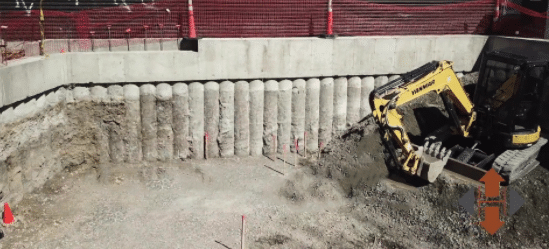
Photo 4: Secant Pile Walls are installed to shore existing footings, provide temporary excavation support, and serve as the new permanent basement wall.
